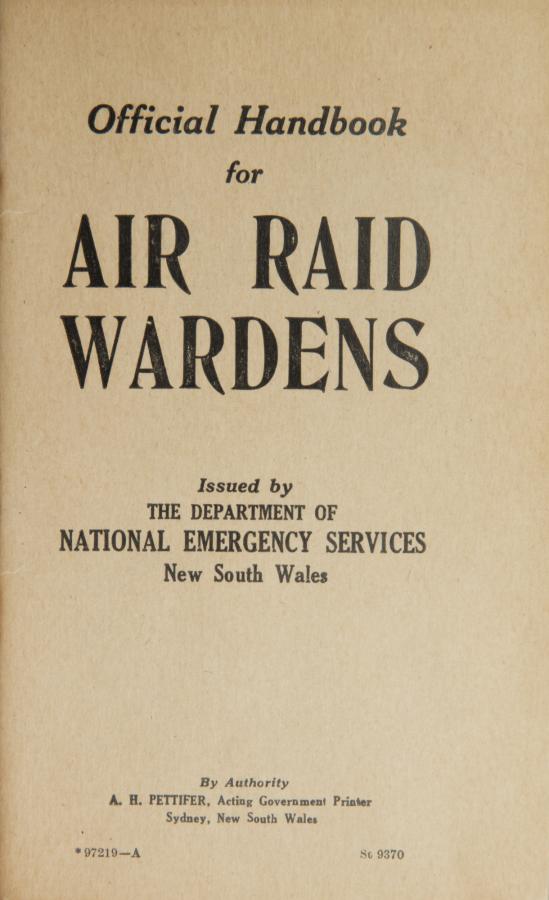Air raid precaution booklet

Handbook for air raid wardens
The air raid precaution booklet advised households on what to do in the event of an air raid. The lessons learned by the British during the Blitz in 1940 were soon adapted for local conditions by Australia’s National Emergency Services (NES). Sirens were installed, shelters dug, and volunteers trained in first aid and firefighting. Without the anti-aircraft defences that had protected London during the Blitz, Australians prepared for the attack with whatever they had on hand. Volunteer air observers were vigilant and civilians of all ages practiced concealment.
Extensive Air Raid Patrol exercises were carried out by 5,000 people in Melbourne in 1942, simulating air raid conditions, AWM 027457A
After the attack on Pearl Harbor in December 1941 there was a sense that Japanese involvement had brought the war much closer to Australia, and emergency procedures were taken more seriously. Men, women, and children got to work constructing air raid shelters. Meanwhile, the NES required schools and colleges to dig air raid shelters for their students, and instructed them to take part in air raid precaution drills.
Air raid wardens carried gas masks, helmets, and rattles or whistles. Schoolchildren were issued identity tags in case they had to be evacuated and were told to carry something to bite on to limit the shock of bomb blast.
Responsibility was placed on households to make arrangements for their own air raid protection. This booklet was issued to air raid protection personnel, advising actions to be taken in case of explosions, fires, gas attacks, and destruction resulting from air attack.
1. Why do you think it was so important for everyone to know how to respond during an air raid?
2. The Anderson Air Raid Shelter was created in 1938 at the request of John Anderson, the British Home Secretary and Minister for Home Security. Used in Britain and (to a limited extent) in Australia, the structure was intended to be half-buried in the ground, with the upper half covered in soil. Why were these types of shelters important? List some advantages and disadvantages of the Anderson Air Raid Shelter.
An Anderson Air Raid Shelter under construction in the back yard of the Adams family home at 405 Gardeners Road, Mascot, Sydney, 1942. AWM P04338.004

